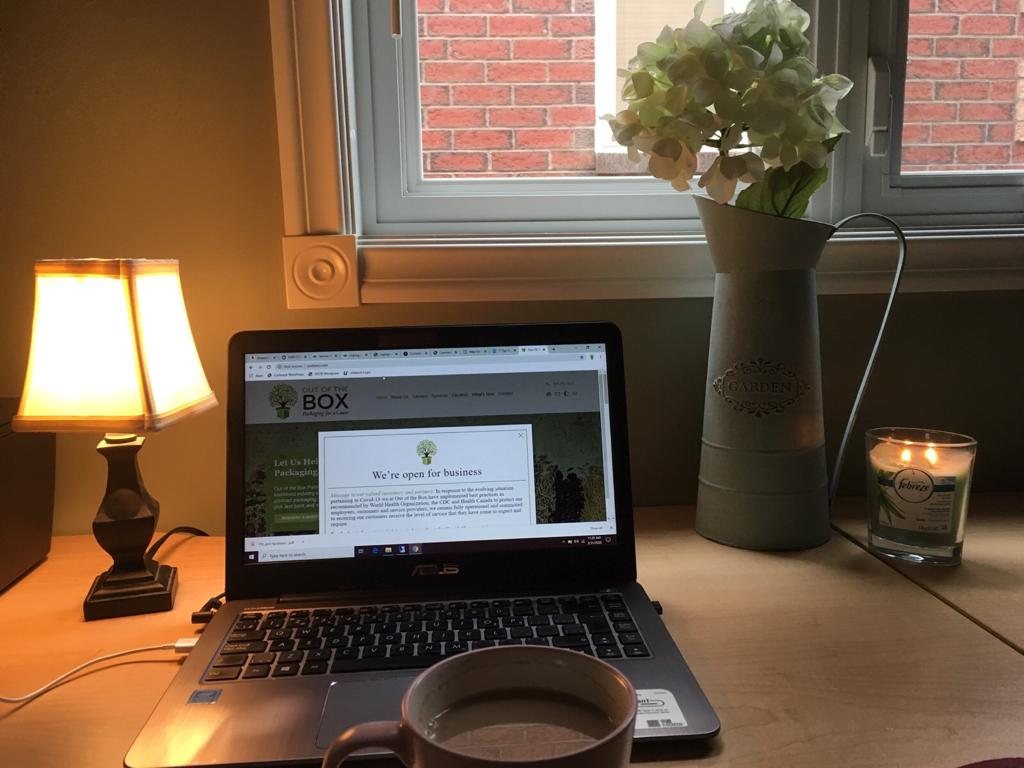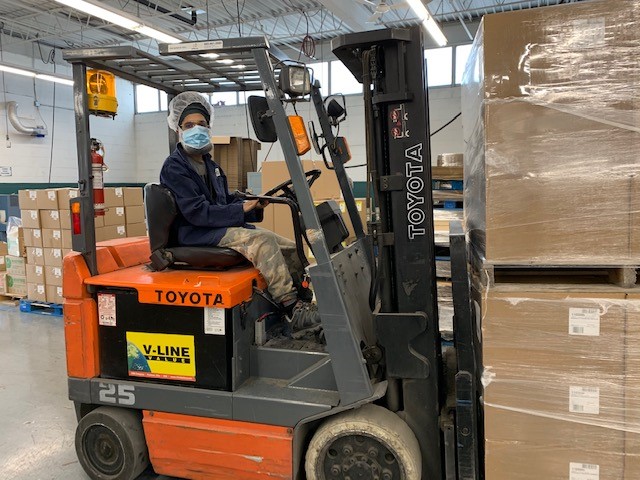As the global Covid-19 pandemic continues worldwide one thing is for certain – it is not business as usual. The Ontario business landscape has been changed dramatically and there is a high likelihood that it will never return to “normal”. As we move forward in this unfamiliar workplace territory our new “normal” is emerging. From this pandemic, businesses are now looking at what new implementations have been working – perhaps better than previously; and where there have been gaps.
To start – the work from home model – does it work? Looking at a review done by LinkedIn’s Workforce Confidence Index it shows that 59% of those who responded felt that they were being productive while working from home. They also looked at what the size of the company did to these numbers. Individuals at large firms with 10,000+ employees were more likely to say they were productive at percentage rate of 68%. Mid-market companies were at 62% and small businesses came in a close 3rd at 61%. Source: LinkedIn article “Canadians are working remotely. Can it succeed? – Riva Gold – published May 19th, 2020.
Manufacturing has also seen a great deal of changes in a short period of time. In a sector where working from home is almost completely impossible, safe for those occupying the office functions, the changes are clear and pronounced. Sign-in sheets confirming employees have not been travelling or exhibiting any Covid-19 symptoms have been the norm along with physical distancing and increased use of specific PPE including masks and gloves. There are challenges to these new measures. Capacity of a manufacturing location to ensure physical distancing can be carried out properly, maintaining a stock of PPE where shortages have occurred and an unexpected challenge of increased production due to customer fears about being able to fulfill orders.
Those in sales roles have also faced obstacles in their jobs. In a role where interacting face to face with clients is seen as a measure of success and client management, new tactics have had to be employed to carry out engaging communications. Video conferencing is on the rise in order to facilitate these “face to face” meetings. An ever-popular application, Zoom’s usage increased substantially in March of 2020. Over the course of that month it was reported that the application was seeing 200 million daily meeting participants. In comparison, in December of 2019 there were 10 million. By April the number has increased to 300 million. Source: businessofapps.com
For many of those in typically labeled “office” functions there has been a high volume of individuals working from home. This in itself is not the most problematic situation but due to a series of other restrictions around Covid-19 it has presented some other hurdles. Namely home schooling and child care. As licensed daycares and schools have remained closed the responsibility of child minding and education has fallen upon parents at home. Trying to balance work with child care is difficult outside of a pandemic but during has seen many stretched to their limits. Further challenges present themselves where there is a lack of communication between those that remain “at the office” and those working from home. Maintaining clear communication is key to productivity. Lastly, employees require clear and measured directions from superiors in order to provide focus, time management and managing of expectations.
For those in a HR function, things have never been busier. From an increase in furloughs to managing updated processes to ensuring all employees receive proper training and education around the pandemic theirs is a busy role during this time. Add in the fact that many processes are being implemented from leaders while HR may be afar working at home and things can get challenging. Along with all of this is ensuring that employees feel supported during this time. There is an understandable increase in stress for those “coming in to work”. Employees are scared that they might get sick or get their family sick. Providing employees with compassionate treatment and clear communication is paramount right now. HR very well could be the glue holding many companies together at the moment.
Key Takeaways
Production Efficiency
While much of this pandemic has shown us that our typical business processes are inadequate at handling a pandemic there are many positive key takeaways. Learning how to make production as productive as possible be it through logistics, employee health and well-being or time management has come to the forefront. Inside or outside of a pandemic, continuing production with these priorities will ensure smooth operations. Where individuals may have come in to work sick before they are now forced to stay home. This will hopefully help shift the mind-set of individuals who have previously believed that they “must” go in to work as if they do not the job will not get done. This pandemic has shown that the job will still get done and operations will still carry on while an individual recuperates.
Technology
We can also look at the greater use of technology to strengthen our relationships with clients while better managing time. Face to face is no longer defined as a meeting in the same location. Better use of applications to bring people together has helped us have the necessary meetings. The pandemic has also curtailed the unnecessary meetings. The “time wasters” if you will. The reason for a mug with the catch-phrase “this meeting could have been an email”. A more discerning look at what are truly urgent matters and those that can be addressed through different forms of communication.
Employee Health and Wellness
Lastly, this pandemic has highlighted the important role of HR and ensuring employees physical and mental wellness. Without either of these a company cannot perform at its best. In order to succeed companies must work as a team. Empathy and understanding will always go a long way with employees and by providing this to them they will in turn give their best to their employers. While we can only hope this pandemic will end sooner rather than later, we should never forget the key learnings that have come from it.


